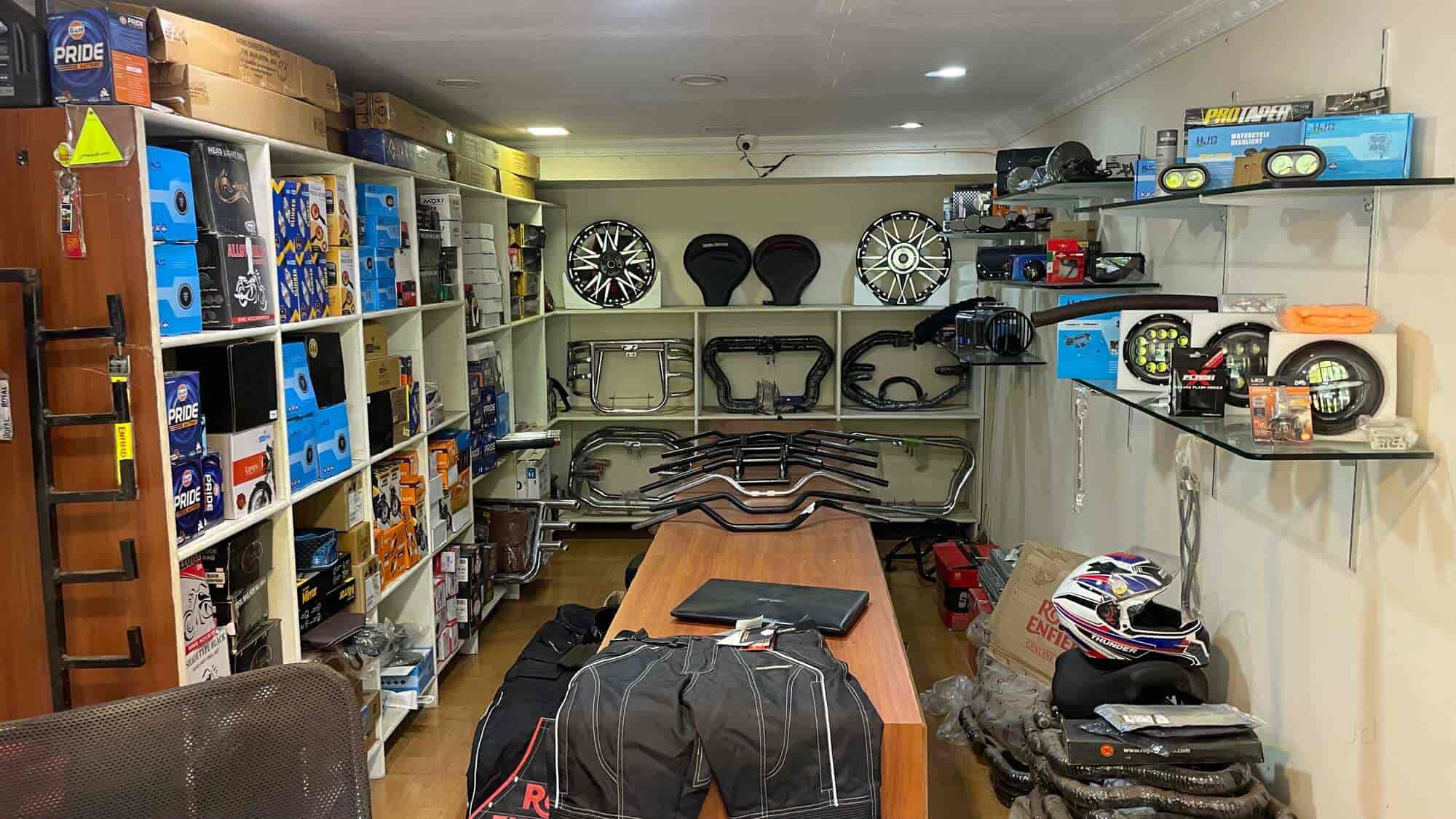A Thorough Appearance at Motorbike Parts: What Every Rider Should Know
An extensive understanding of motorcycle components is not just helpful but critical for any type of cyclist intending to make best use of performance and security. Each part, from the engine's elaborate operations to the dependability of brake systems, plays a crucial role in the general experience and capability of the bike.
Understanding the Engine
The engine, frequently considered the heart of a motorcycle, is an intricate assembly of components that operate in consistency to transform gas into motion. At its core, the engine's main feature entails the burning procedure, where air and fuel mix and fire up within the cyndrical tubes, causing regulated surges that drive the pistons. These pistons move up and down, converting chemical energy into power, which ultimately transforms the crankshaft, ultimately powering the bike.

Comprehending the complexities of a motorcycle engine is crucial for bikers and enthusiasts alike. It not only gives understanding into just how motorbikes achieve their remarkable power and rate but also help in effective upkeep and troubleshooting, making sure longevity and integrity when driving.
Suspension Solutions
While the engine powers the bike, the suspension system plays a vital duty in guaranteeing a controlled and smooth ride. The shock absorber is responsible for taking in shocks from the roadway surface, keeping tire contact, and giving stability throughout cornering and braking. It consists of two primary parts: the front forks and the rear shock absorbers.
Front forks are usually telescopic, consisting of a spring and moistening system. The springtime prolongs and presses to absorb bumps, while the moistening device controls the motion to stop extreme jumping. This combination ensures the front wheel remains touching the roadway, providing premium handling and comfort.
The rear suspension, commonly a monoshock or twin-shock setup, works likewise to the front suspension but is customized to sustain the bike's weight and rider - motorbike shop. It takes care of back wheel movement, contributing to the bike's overall balance and responsiveness
Suspension systems can be flexible, allowing bikers to adjust preload, compression, and rebound setups according to individual choices and riding problems. This adjustability boosts efficiency by maximizing the bike's interaction with diverse terrains. In summary, an efficient shock absorber is critical for cyclist comfort, safety, and the motorbike's managing expertise.
Brake Elements
Stopping power is an essential element of bike safety and security, and it depends upon the effectiveness of the brake parts. The primary elements of a motorbike's stopping system consist of the brake pads, calipers, rotors, and master cylinder. motox parts nz. Each of these parts plays a vital duty in ensuring efficient braking efficiency
Brake pads are important as they create the necessary friction versus the blades to decrease or quit the motorbike. Built from materials such as sintered metal or natural composites, the choice of brake pad product dramatically influences efficiency and long life. Calipers, housing the brake pads, use stress to the pads when the brake lever is involved, assisting in contact with the blades.
The rotors, commonly made from stainless-steel or cast iron, are installed to the wheels and act as the surface area against which the brake pads press. Their layout, including size and thickness, impacts heat dissipation and stopping power. The master cyndrical tube, linked to the brake bar, generates hydraulic stress transmitted through brake lines to the calipers, making sure consistent stopping force.
Routine upkeep and evaluation of these parts are important for optimum performance, stopping wear and ensuring cyclist safety when traveling.
Tire Basics
Beyond maintaining durable stopping systems, making sure ideal tire performance is equally significant for motorcycle safety and performance. Tires are the single get in touch with factor between the bike and the roadway, making their condition crucial in taking care of, security, and general trip quality.

Furthermore, take into consideration the tire's age. Rubber compounds break down over time, also if step appears appropriate. Check the sidewall for the DOT (Department of Transport) code to ascertain the tire's age. Normally, substitute is advised every five years, despite wear. Investing attention in these tire fundamentals not just optimizes performance yet also dramatically enhances riding safety and security.
Electric Equipments
In the realm of motorcycle upkeep, the electrical system plays a vital duty in ensuring dependable performance and biker security. This complex network includes necessary parts such as the battery, generator, starter electric motor, and electrical wiring harness. Each aspect is crucial for the smooth procedure of the motorbike, from ignition to illumination and communication with different sensors.
The battery serves as the heart of the electrical system, offering the necessary power to start the engine and run devices. Consistently examining the battery's voltage and terminals for deterioration is critical to avoid unanticipated failings. The alternator, on the other hand, reenergizes the battery while the engine is running, making certain a continual power supply.
To preserve it, riders ought to pay focus to any uncommon sounds or problems throughout start-up. Guaranteeing that the cords are free and intact from damages is important for protecting against short circuits and making sure functionality.
Final Thought

Stopping power is a basic element of motorbike safety, and it pivots on the performance of the brake elements. The primary components of a motorbike's braking system consist of the brake pads, calipers, blades, and master cylinder.Brake pads are crucial as they produce the essential rubbing against the blades to slow down or quit the motorbike.Beyond maintaining durable braking systems, ensuring optimum tire performance is equally substantial for motorbike safety and security and performance.In the realm of bike maintenance, the electric system plays a vital function in ensuring trusted performance and rider safety and security.